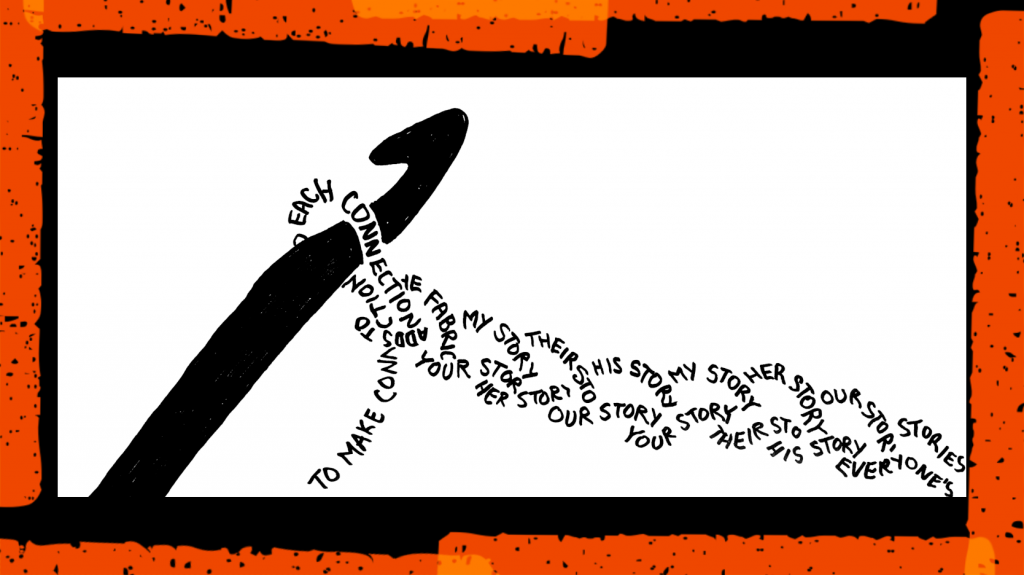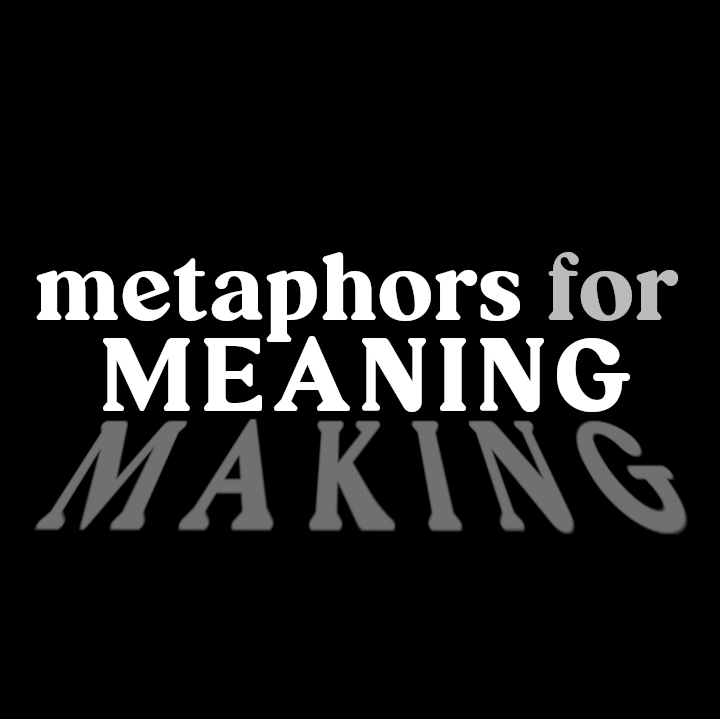Hello! We’re still in a Pandemic here!
Stay Home and Chain!
One of the first things I remember making with yarn as a little kid was a chain. I think I just used my fingers at first then learned to use the hook to make the chain. I chained and chained and wandered around the house, chaining some more and leaving a trail of chained stitches behind me. It was years, decades really, before I learned the next step in crochet: chaining into the next row to make solid fabric. But back then I only ended up with a very long chain that rolled up into a quite pleasing big ball. Simple pleasures.
Crafting a CHAIN is simple and only requires yarn and a crochet hook. One loop chained into another, another loop into another loop. To CHAIN is to make connections and each connection adds to the fabric, the story. My story, then your story, his story, her story, their story, our story. One loop is easily unraveled; many loops linked together are stronger
A popular yarn construction these days is a “chainette” yarn which is basically what I made when I was little. Of course actual chainette yarn is made on machines, more tightly woven and uniform. The chainette construction is arguably tighter than a plied yarn, certainly moreso than a single plied yarn. Stitches and people: we’re stronger together.
Usually when we think of chains, we think of those that bind us. Of prisons and slavery, past and present. Sadly there are far too many to name. And we must break all the chains that bind and dehumanize us and all our human siblings. And part of how we break chains is learning as a culture about the ways we are bonded, not bound. There are connecting loops that connect us, bind us as a human family, that can outweigh those that separate us. But much of our super predatory capitalistic culture is based on isolating us and not seeing the ways we have mutual interest. Connection. Because again, we are stronger together.
I remember a drama teacher that used the image of an invisible thread to talk about how actors could project deep relationships and emotions on stage. They encouraged performers to visualize this invisible thread between you and another character you had tension with onstage. To imagine it holding strong between you no matter how close or far away you were from each other onstage – or even if one of you was offstage. They taught that imagining this invisible thread would help the actor — and therefore the audience — truly feel the complex emotional bonds being expressed. This also me think of prophets, past and present, speaking of seeing the stranger as our family member, invisibly connected to us, like chained stitches. Binding us such that any wound felt by another is a wound inflicted on me and mine.
When we take the time to see the invisible links between systems, between people, between one another, then we can truly begin to do the work needed to craft a better world.

Possible Questions/Further thoughts to explore
What other things come to mind in thinking about linked or chained stitches? and being called to craft a better world?
If you haven’t crocheted or finger knit a chain, have you ever made paper chains? A fond childhood pastime often crafted for holiday decorations, paper chains are usually best done with more than one pair of hands. What does this simple childhood craft make you think about in relation to the work of crafting a better world?
In the video Elizabeth talks about the invisible thread that might be imagined between characters in a play. Does that resonate for you (as a performer or viewer)? Have you ever imagined such an invisible thread when viewing tango or other kinds of dancers as they lock eyes across a room and move their bodies in mirror tension to one another? Or experienced this as a dancer or participant in any kind of performance? When you become aware of this tether, what does it feel like in your body?
Have you ever stopped to imagine an invisible connecting thread between yourself and others in a tight-knit group you are part of — such as a stitch/crafting group or faith group or activist group? When you feel those connections do you feel it strengthens you in whatever you are doing, personally or collectively?
Valerie Kaur teaches about Revolutionary Love and Seeing No Stranger. Have you ever stopped to look upon someone you don’t know, perhaps even someone you might otherwise draw away from because of perceived differences, and begun to visualize them as a close family member? Someone you would embrace without question, someone whose wounds you would seek to heal. What happens when we “see no stranger”? When we visualize every person we encounter as an extension of ourselves, as family?
Making “links” — all kinds of connections — is important. And especially during this time when we are called to do the intentional work of rebuilding a more sustainable and equitable world. Many of the systems we need to rebuild or dismantle were intentionally crafted to be inequitable. What connections can we make there? What intentions do we think went into the formation of a system that seeks to serve only a few?
It can be overwhelming to think of all the dismantling and rebuilding and crafting that needs to be done. It is often our natural inclination to just want to jump in and “fix” things. The inevitable outcome of this desire is often little bandaids that tend to only make people feel good rather than producing real change. These kinds of fixes often make things worse by masking deeper infections. To make a meaningful, lasting “fix” — it might be helpful to imagine another kind of chain or connected pieces. For example, if we want to “fix” schools, we can’t just focus on the footprint of the school itself. We have to see all the links in the chain: the impact of racism, economic instability, the environment, domestic violence, families and relationships, home ownership or the lack thereof, food insecurity — not to mention poor teacher pay and insufficient training to meet all our kids’ needs. When we tease out all these different pieces and see how they link together, we can see that if we focus on only one link in the chain, we are not likely to make a meaningful enough impact to create real change. It can be really disheartening! Might it help to visualize these links that seem to work more like chains of bondage on our children and teachers, holding them down, keeping them from thriving — if we instead visualize how we can transform each of these pieces so that they are instead life-giving bonds or webs of connection that instead buoy and support. Like learning the next step in crochet, chaining into the first stitch to start a new row and begin creating firmer fabric — changing systems, changing our world — involves imagining and building all kinds of chains of connection. Where do you plan on starting your chain?
